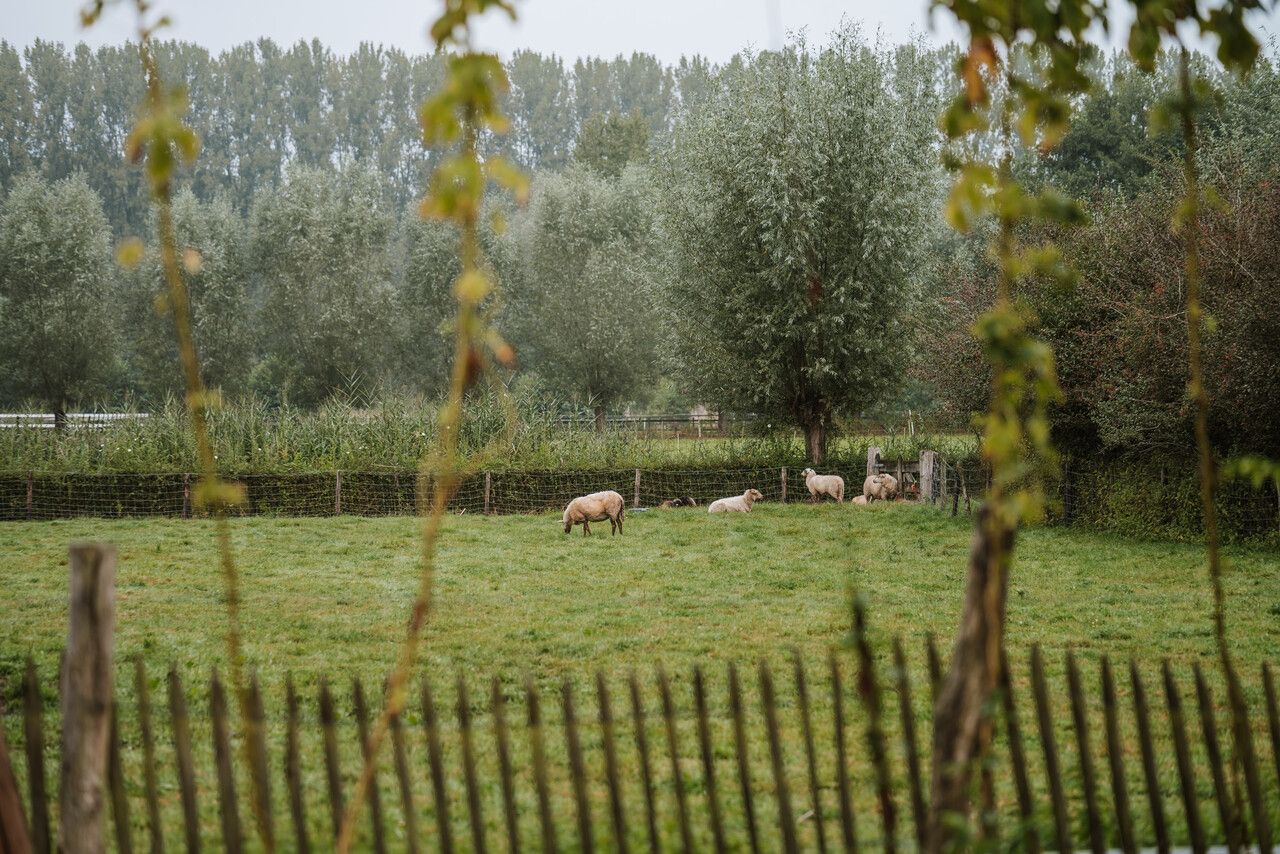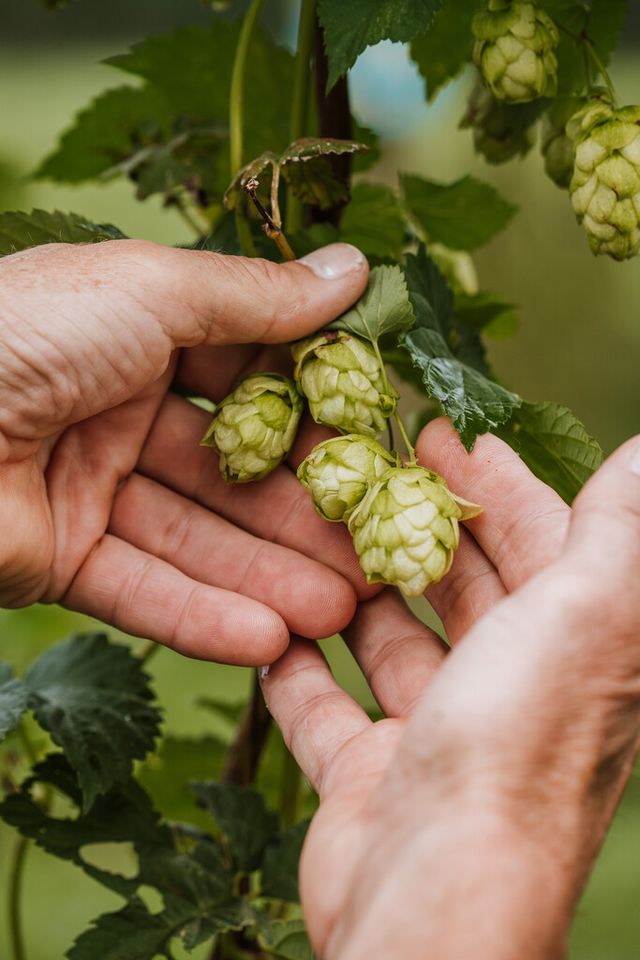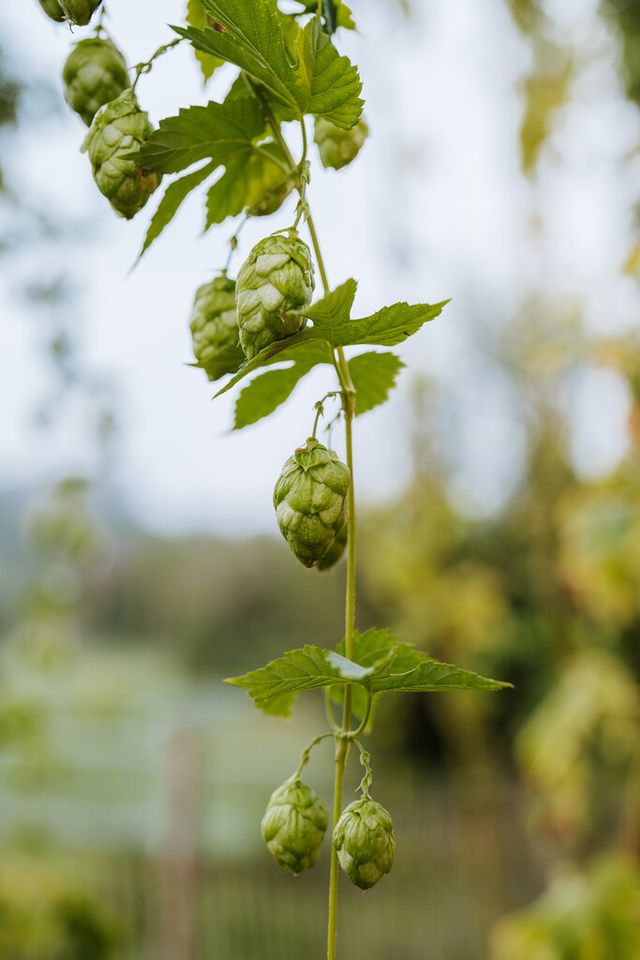Hop Field at the Schaapskooi
From a distance, it's easy to spot: the hop field behind the Schaapskooi in Schijndel. This field is where hops grow — one of the key ingredients in beer.
From a distance, it's easy to spot: the hop field behind the Schaapskooi in Schijndel. This field is where hops grow — one of the key ingredients in beer. Thin guide wires help the hop plants grow upward, stretched between wooden poles that reach seven meters into the air. The plant spends the winter underground, then shoots up fresh sprouts in spring. As a climbing plant, it can grow up to twenty centimeters a day!
Centuries-Old History
This region — with its loamy, humus-rich soil — has a long-standing history of hop cultivation. Many farmers once had hop pits on their farms. In these pits stood tall hop poles (typically willow branches), supporting the climbing hop plants. In the 15th and 16th centuries, tens of thousands of hop pits could be found scattered across Schijndel. The trade in dried hop cones provided a valuable extra income for farmers, who primarily grew rye, potatoes, and oats. Schijndel even had two hop wagons where the hops were weighed for trade.
Ne…
From a distance, it's easy to spot: the hop field behind the Schaapskooi in Schijndel. This field is where hops grow — one of the key ingredients in beer. Thin guide wires help the hop plants grow upward, stretched between wooden poles that reach seven meters into the air. The plant spends the winter underground, then shoots up fresh sprouts in spring. As a climbing plant, it can grow up to twenty centimeters a day!
Centuries-Old History
This region — with its loamy, humus-rich soil — has a long-standing history of hop cultivation. Many farmers once had hop pits on their farms. In these pits stood tall hop poles (typically willow branches), supporting the climbing hop plants. In the 15th and 16th centuries, tens of thousands of hop pits could be found scattered across Schijndel. The trade in dried hop cones provided a valuable extra income for farmers, who primarily grew rye, potatoes, and oats. Schijndel even had two hop wagons where the hops were weighed for trade.
New Hop Field
Hop cultivation eventually disappeared from Schijndel but was revived about twenty years ago at Schaapskooi Schijndel. A new hop field was created, and a hop-est, a special drying barn, was built. In the attic of this clay-walled building, you'll find a tangible reminder of the area's centuries-old hop culture: a wooden beer tub from the 16th century, unearthed in the middle of the village. In this Brabant hop capital, hops were once shipped to Den Bosch and cities in the western part of the country.
Hop Harvest
Around June 21 — the longest day of the year — the fast-growing hop plant reaches its peak height. From then on, the hop cones (the flowers of the female hop plant) begin to bloom. In September, the hop-covered guide wires on the Schijndel field are lowered so the hop cones can be harvested. That’s also when the annual Schijndel Hop Harvest Festival is celebrated, complete with a musical parade, a hop queen, and a mass in honor of patron saint St. Rochus. The hop field in Schijndel produces around 100 kilos of dried hops each year — enough for 50,000 liters of beer. The hops are harvested partly by hand by volunteers and partly by machine.
Brewing
After a careful drying process in the hop-est (the drying barn), the hops are ready for use. That’s when the brewers get to work. For example, Sint Servattumus in Schijndel and Stadsbrouwerij De Vleeghel in Veghel use hops from Schijndel in their brews. So do the members of ’t Hopbelleke, the association of hobby brewers from Schijndel and the surrounding area. Every month, a club night is held in the hop-est at the Schaapskooi, where tasting their own brews takes center stage. Board members Huub Lackamp and Peter Geerts explain: “Everything is assessed carefully — from aroma and taste to clarity and foam head — using the Beer Judges Guild handbook as a guide. Learning to taste well is truly an art.”
Taste and Experience for Yourself
Would you like to taste a beer brewed with Schijndel hops? The terrace at De Schaapskooi is the perfect place. Try the flavorful Skupke blond, dubbel, or tripel. Group hop tours, including beer tastings, are available on request. For more information, visit the websites of De Schaapskooi or ’t Hopbelleke.
This text has been translated using AI.
This is how to reach Hop Field at the Schaapskooi
5482 WP Schijndel Plan your route naar Hop Field at the Schaapskooi
Starting point: from your location





